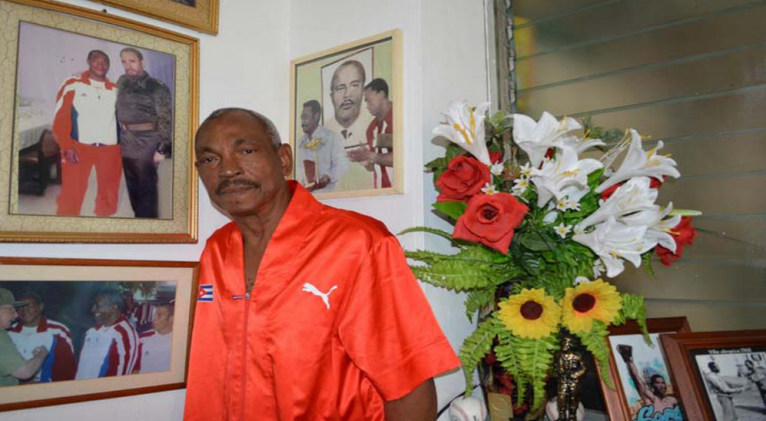Garbey, Even Elegant in His Farewell
especiales

This weekend Cuba lost one of the best boxers in its rich history, Rolando Garbey, who taught with his elegant boxing, and so he passed away, giving his last breath to the training of new generations.
He did not die in the ring by pure chance, but it’s surely what he would have chosen: to take one last look at La Finca he loved so much and close his eyes right there, where he began to write his history in the art of boxing and where decades he taught new generations with his wisdom, when his body could no longer follow the commands of his mind.
At a time when there were plenty of good fighters in the amateur world, Garbey made himself a spot with a smart style to combine his punches and dominate the middle distance like no one else. As he himself said proudly, not having a single scar on his face after more than 360 fights was his greatest achievement.
His 1.78 meters in height, his upright and excellent dodging style and his agile leg movement made him an icon of amateur boxing.
Born on November 19, 1947 in the eastern province of Santiago de Cuba, Garbey began elite boxing in 1965, when he finished second in the Playa Girón National Championship, defeated by Andrés Molina.
However, the coaches saw all the potential he had and since then included him in the national preselection, with which he participated in his first Pan American Games, in Winnipeg 1967.

There he defeated in a string the Colombian Juan Córdoba (RSC in the first) and the Mexican Agustín Zaragoza (5-0), and in the final he defeated the Argentine Víctor Galíndez by knockout in the second round, who later became world champion in professional boxing.
He successfully defended his Pan American gold in Cali 1971, where he also went the distance against the Puerto Rican José Colón and the Chilean Luis González, and in the fight for the gold medal he met the Mexican Emeterio Villanueva.
His last title in the Pan American Games was in Mexico 1975, where he beat the Peruvian Luis Lamadrid; in semifinals, for the third time in his career, the Venezuelan Alfredo Lemus, and for the gold medal, the Canadian Michel Prevost, to become the first three-time Pan American boxing champion.
Later, other Cuban boxers joined him with identical results, like Orestes Solano, Julio González and Félix Savón, who completed their third title two decades later, and this year Julio César la Cruz became the first tetramonarch in this type of competition.
But if in the Pan American Games Garbey had a first, he also did it in the Olympic Games, since he was the first Cuban boxing medalist under the five rings, an honor shared with his everlasting friend Enrique Regüeiferos.
For the boxer from Santiago, the silver medal achieved in Mexico 1968 is his main result, because it made him the first Olympic medalist and, furthermore, he achieved it without having a prediction, when he was barely 20 years old.
In the Olympic Arena in the Mexican capital he only lost in the final match against the Soviet boxer Boris Lagutin, champion of Tokyo 1964 and bronze in Rome 1960, who had a lot of experience in his gloves.
Four years later, he lost in the quarterfinals against Polish Wieslaw Rudkowski, but won the bronze in Montreal 1976, already on the verge of retirement, after losing to the Yugoslavian Tadija Kacar, after winning his three previous matches before the time limit.
His achievements also included the 71 kg world title in the first World Championship, in Havana 1974, and those in the Central American and Caribbean Games in Panama 1970 and Santo Domingo 1974.
After his retirement in the late 70s, the three-time Cuban national champion also became a coach, and until entering the hospital where he died this Saturday, he was a member of the technical staff of the Cuban team.
As the song goes: Until the last breath!
Translated by Amilkal Labañino / CubaSí Translation Staff














Add new comment